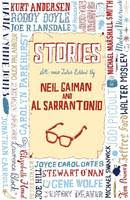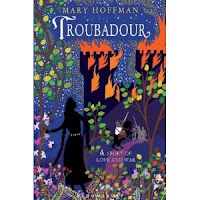In Which There is a Moving Castle
Dec. 4th, 2011 09:32 pmI love Diana Wynne Jones' books. I have done for years and years, since I first met Christopher Chant in Wells library. I hunted down all of her books which I could find, (many 2nd hand) and later, buying then new, as they were published. I had the pleasure of meeting her once, at the Bath Festival of Children's Literature, and she sent me a lovely, personal reply when I wrote her a fan letter.
So I was excited and nervous in equal measure when I found out that there was to be a stage adaptation of 'Howl's Moving Castle', one of DWJ's YA books.
(Picture from theatre website - southwarkplayhouse.co.uk ) |
I have a very soft spot for Howl, and for Sophie, and so while I was excited to see how the story would work on stage, I was also afraid that it would be spoiled, or that whoever played Howl might be un-Howl-like...
But I decided that I would have to see it for myself, and judge, so I got in contact with my theatre-going, retired librarian cousin, and booked tickets for the production, at the Southwark Playhouse. And that is where I went, yesterday.
The play was in the Vault, at the playhouse, which is a very small space, under the railway arch near London Bridge station.
Good start: The set consisted of a couple of burning torches, and then, in the stage area, a large castle, like a paper cut out. There was very little in the way of props - all of the rest of the set and scenery was done by way of lighting and projections, so when the Castle was moving, we had a panorama of mountains, at other times, the streets of Market Chipping, fantastical bare trees with living branches for the Witch's domain, and moving light for Calcifer. When Howl went to fight the Witch, the castle had (projected) propellers, and Howl's silhouette was projected - All the 'son et lumiere' parts of the production were excellent.
The play itself is but a shadow of the novel. There are only 3 actors (plus a recorded narration from Stephen Fry, and the voice of Calcifer) - Howl (Daniel Ings), Old Sophie (Susan Sheridan) and Young Sophie/Witch of the Waste (Kristen McGuire) and play lasts for less than 90 minutes, so the story has, inevitably and of necessity, been hugely cut and simplified.
I rather enjoyed Howl. He had more or less the right combination of cleverness and vanity, although I didn't feel his underlying goodness came through. I felt (old) Sophie came across well - determined, and more than a match for Howl, but the Witch of the Waste was simply a pantomime villain - you expected her to start sending for her flying monkeys at any moment, which was a bit disappointing.
Over all, I felt that the play had tried for the feel of DWJs work, and had succeeded, up to a point, but only up to a point.For me, too much of the plot, and as a result, too many of the things which make the book so good, had gone.
I enjoyed it, but I felt that it had lost a lot in the adaptation.The actors and the sets and styling were all excellent, but I still love the book best. So, if you have the opportunity, do see it. It's fun, and much more interesting than your average chirstmas pantomime, but it's not DWJ's story.




